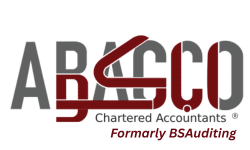Establishing a business is not easy. It requires extensive planning, investment, and analysis. However, maintaining and flourishing a business is even more critical. Business owners and stakeholders spend exhaustive time brainstorming to devise strategies, discuss possible threats and explore potential to boost their business performance. Fortunately, there are professionals out there who have the skill to not only chalk out effective business strategies but also can alter existing plans to make them more productive and successful. Professionals do this through a process known as Business Process Reengineering, or BPR in short.
Business Process Reengineering
Business Process Reengineering is defined as the process or approach whereby a business improves or alters its existing plan of action to attain maximum benefits. The BPR achieves its targets by redesigning operational and organizational structures. BPR can be applied to all industries and sectors. However, it finds its most common application in the field of banking and finance.
Steps to Carry out BPR
There are steps to follow while conducting the process of business reengineering. They have a significant role in ensuring all processes work smoothly.
1. Setting Goals and Vision
The management and stakeholders of the business look into the areas that need work. They set future goals for the company while bearing in mind its vision. The company takes into consideration the expectation of its customers, market competition and possible opportunities.
2. Identification and Analysis
In this step, the authorities identify any loopholes in the existing system of operations. They take a detailed look into opportunities for improvement and how they can boost business.
3. Gathering a Competent Team
It is important to gather a strong team to diminish the chances of failure. Top management should have a clear vision of the operations that need completion and provide strategic direction. The business requires an operational manager who understands the procedures inside and out. To complete the team, it is also critical to have engineers with distinct fields of experience. It is critical to have the tactics and goals clearly defined at this point. To understand client demands and analyze the competition, the business might conduct reviews and benchmarking efforts. It is also vital to explain the need for this process and the goals to the rest of the team. This will also promote their input and assist them in preparing for the future.
4. Identifying Processes that Require Reengineering
In this process, the processes that require reengineering are identified and correction is initiated. The professionals outline areas with higher potential to yield maximum benefits after applying business process reengineering. Cross-functional processes, broken processes, or ones with bottle-necks are processes that are considered a priority.
5. Process Reengineering
The identified processes are worked upon. Professionals and skilled personnel redesign and redefine the processes to make them successful and highly beneficial for the organization. Assistance from other departments is sought to make the process free from any setbacks or pitfalls.
6. Implementation of Reengineered Process
Finally, the business process reengineering plan laid out is implemented and incorporated into the new business model. The process is up for a demonstration and experts observe the process closely to identify any problems. In case any issues are identified, the process is repeated with a change in strategies. Once the process is successful, it is finally implemented.
Benefits of Business Process Reengineering
BPR is a massive endeavor, and many corporate executives are unsure if the payback is worthwhile. Here are the top five advantages of re-engineering your company procedures to help you relax:
Simplified and Streamlined Operation – At the conclusion of this project, the company will have a streamlined operation that has eliminated terminated procedures (or stages in a process) that previously slowed things down. Efforts will be better oriented toward organizational objectives, employees will have a clear route to follow, and customers will be more satisfied with the service they receive.
Increased Efficiency – By removing duplication in your operations and fine-tuning procedures, items will flow more simply and quickly through the process, considerably enhancing overall efficiency.
Higher Quality of Results and Products – Through simplified, digital procedures, you and your workers can spend more attention on creating relationships with your consumers, thanks to increased productivity and focused goals. Furthermore, by improving communication across cross-functional teams, information is delivered through the channels faster, allowing your company to be more robust to market changes.
Maximized Return on Investment (ROI) – All of the aforementioned benefits work together to help you get the most out of your automation investment.
Conclusion
Business process reengineering can greatly benefit business performance and efficiency. In order to make the most out of the process, it is important to seek the help of experts and professionals who are pro in the field and have the ability to execute the process with a guarantee of success.
BS Auditing of Accounts has a team of skilled professionals who can make the process of BPR seem like a piece of cake. Feel free to contact us:
• Office # 0641, Tamani Arts Offices, Business Bay, P.O. Box 111390, Dubai, UAE
• +971 4 570 7357
• +971 58 108 5690


